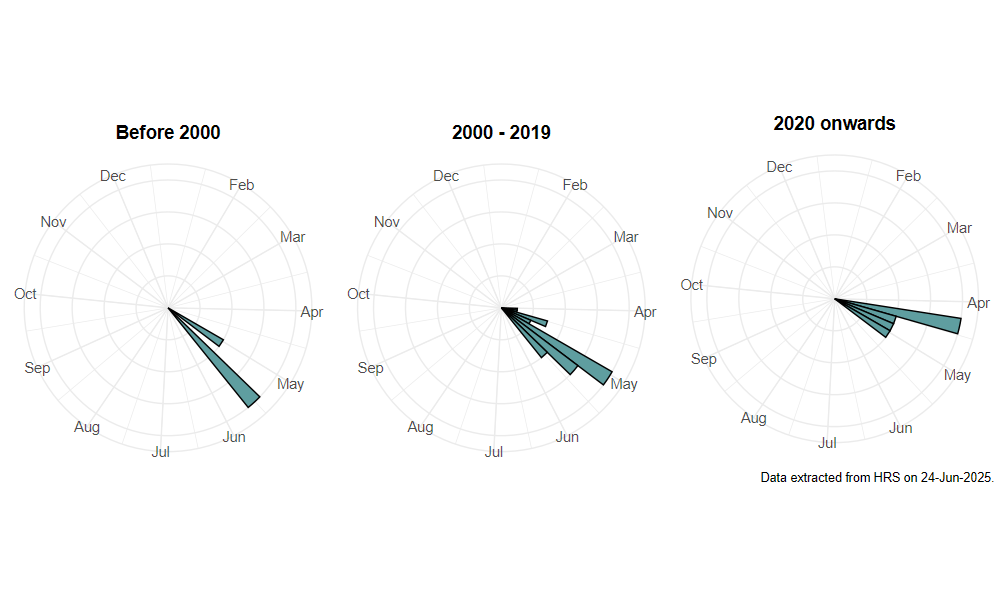Cheilosia psilophthalma Becker, 1894
Identification
Identification difficulty = 5. ![]()
![]() according to Ball & Morris, 20241
according to Ball & Morris, 20241
Synonymy
Separated from C. urbana by Claussen & Kassebeer (1993)2 and recorded from Great Britain by Falk (2002)3.
Biology
Females oviposit on leaf axils of Mouse-ear Hawkweed Hieracium pilosella. Upon hatching, larvae feed in leaf axils, rosette centres, stolon tips, and leaves and pupate on the soil surface after 3 instars (Grosskopf, 2005)4.
Flight period
The following plots show the number of unique records per week excluding those reported to be of immature stages.

Status
DATA DEFICIENT - Ball & Morris, 20145.
Distribution
There are only a few scattered records of this species whose separation from C. urbana demands considerable care. Current evidence suggests that it has a more northerly distribution than C. urbana. Recently recorded from Scotland by Wilkinson (2010)6.

-
Ball, S., & Morris, R. (2024). Hoverflies of Britain and Ireland. WILDGuides (3rd ed.). Oxford: Princeton University Press. ↩
-
Claussen, C., & Kassebeer, C. (1993). Eine neue Art der Gattung Cheilosia Meigen 1822 aus den Pyrenäen (Diptera: Syrphidae). Entomologische Zeitschrift, 103, 409–428. ↩
-
Falk, S. (2002). Cheilosia psilophthalma Becker, 1894 (Diptera, Syrphidae) confirmed as present in Britain. Dipterists Digest (first series), 9(2), 87–93. ↩
-
Grosskopf, G. (2005). Biology and life history of Cheilosia urbana (Meigen) and Cheilosia psilophthalma (Becker), two sympatric hoverflies approved for the biological control of hawkweeds (Hieracium spp.) in New Zealand. Biological Control, 35(2), 142–154. ↩
-
Ball, S., & Morris, R. (2014). A review of the scarce and threatened flies of Great Britain. Part 6: Syrphidae. ( No. 9). Species status (pp. 1–130). Peterborough: JNCC. ↩
-
Wilkinson, G. (2010). Cheilosia psilophthalma Becker and Brachypalpus laphriformis (Fallén) (Diptera, Syrphidae) new to Scotland. Dipterists Digest (Second Series), 17, 165–167. ↩